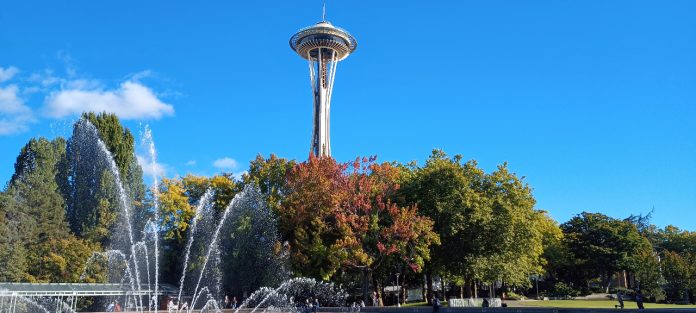
Seattle’s largest civic campus and most centrally located swath of public open space has a new leader, following city council’s unanimous approval for Marshall Foster to become the head of the City department that oversees the Seattle Center. Foster had been selected by a City search team after serving for nearly a decade as the first head of the City’s Office of the Waterfront and Civic Ventures, where he shepherded Seattle’s role in the redevelopment of the central waterfront for over a decade.
Marshall takes on the leadership role of overseeing the 74-acre Seattle Center campus just as the department expands its footprint, taking over operations and maintenance responsibilities for the public spaces that make up the new waterfront. That scope includes the entire pedestrian corridor, Pier 62, the Pioneer Square habitat beach, and the under-construction Overlook Walk and Pier 58. The Seattle Center’s waterfront team includes a dedicated staff that will ultimately move into a permanent operations center close to Alaskan Way.

Andrew Lewis, chair of the council’s public assets committee that considered his nomination, called Foster “an incredible nominee with a broad depth of experience and a track record of working very closely with the legislative branch on a number of different projects in a variety of capacities.”
“The Seattle Center is a very unique place, and I don’t think there’s any city cabinet-level position like it in other parts of the country,” Lewis said. “Especially at a time when we are expanding the reach and the programming, I think it’s important that we have a nominee of the caliber of Marshall Foster running that office.”
The Seattle City Council’s unanimous vote to confirm Foster came at the same meeting that it approved — with one vote of dissent — a resolution moving forward with a public-private partnership to re-envision the Seattle Public Schools-owned Memorial Stadium at the heart of the Seattle Center campus. The City’s partners on the project, in addition to the school district, include the forces behind the $1.15 billion Climate Pledge Arena project. That proposal will reinvigorate the east portion of the Seattle Center’s campus, long dominated by parking.
Foster was the City’s first director at the Office of the Waterfront, which was created in 2014 to be able to fully grapple with designing and implementing the new Alaskan Way corridor and the numerous associated projects following the demolition of the highway viaduct in 2019. Tasked with securing funding for it all, Foster became the public face for a program that provided an incredibly bold vision for how the City might transform one of its most iconic and popular destinations.
Faced with realities like a longstanding agreement with the State of Washington around how many lanes specific segments of the rebuilt corridor would need to be, constraints around funding the project via a Local Improvement District (LID), and other logistical challenges, the project taking shape right now undoubtedly falls short of what many people hoped it would become. But with the vehicle-oriented elements of the project given first priority in construction, the City hasn’t really been able to fully assess the public space improvements.
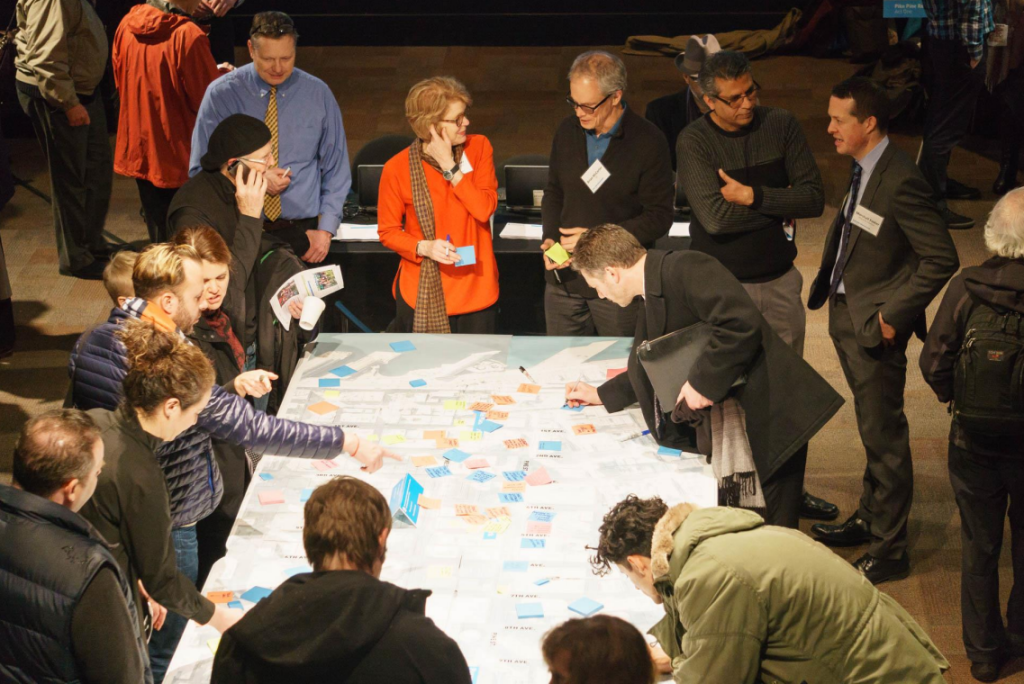
But overly rosy renderings that did their best to obscure the new Alaskan Way set to dominate the waterfront, as well as key details that were changed right before plans were finalized, did a lot to wear away some of the public support that the waterfront project had received from those who were following the project closely.
Some big decision points around the waterfront are still yet to come. A decision around what to do with state-owned Pier 48, which was originally included in the scope of the waterfront project, or the Battery Street portal property at the northern edge of the project in Belltown, could assuage some of the concerns that the new waterfront doesn’t include enough public space.
But Foster has been clear about seeing the core waterfront project as a big step forward. In an interview last year with the Downtown Seattle Association’s Jon Scholes, Foster said he thinks Seattle’s new waterfront will stack up well against other cities’ remade waterfronts, after comparisons were drawn between Seattle, the Embarcadero in San Francisco, and the Rose Kennedy Greenway in Boston.
“I just think our waterfront is way more interesting. A lot of waterfronts have died, and become recreation spaces, or they’ve become real estate developments, in cities that have given up on their industrial maritime stuff. Seattle never did,” Foster said. “It’s been part of the challenge too, I think it’s important not to sugarcoat this stuff. To make this working waterfront with all the port, maritime, everything, work we’ve had to allow room for cars, room for freight, room for all of those things on the waterfront. Those come with trade-offs. I think the core part of the project is extremely urban and extremely pedestrian friendly, and people friendly.”
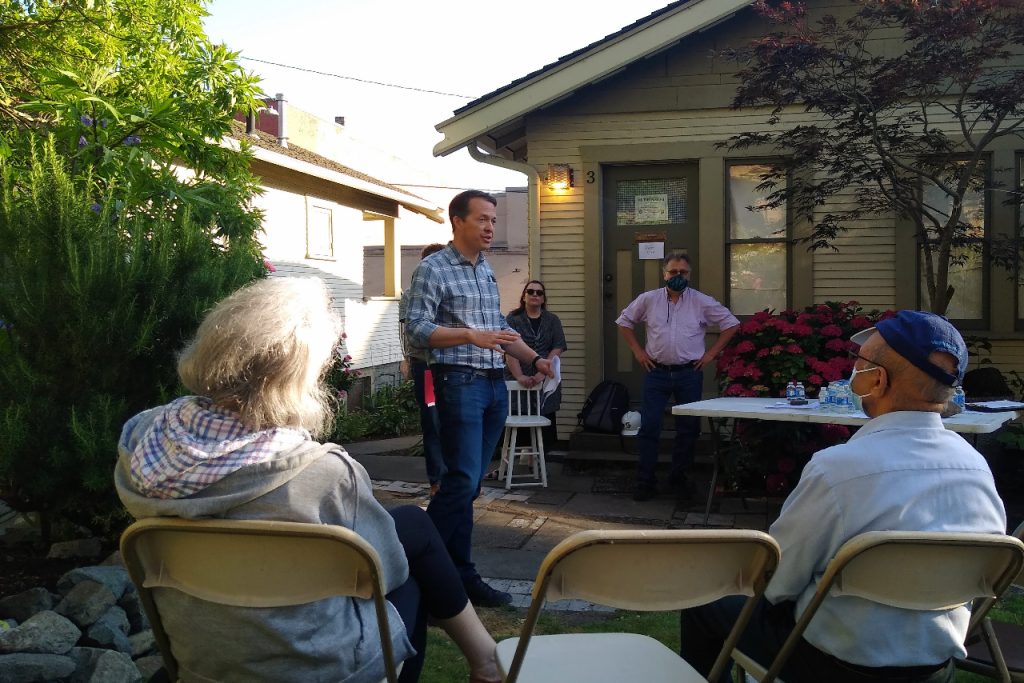
With Foster’s departure, the City has promoted deputy director Angela Brady, who previously oversaw the Mercer Street overhaul in the early 2010’s, to lead the Office of the Waterfront as acting director.
Seattle Center’s new director comes with a long history of doing city planning work. Foster started his career at the City of Seattle in 2007 as a special projects manager in the office of Policy and Management. Three years later, he was appointed City Planning Director. Before Seattle’s planning department was broken into two departments, that role oversaw long-range planning in a similar way that the Office of Planning and Community Development (OPCD) Director does today.
From that post, he developed the Urban Design Framework that shaped growth in South Lake Union, working with Amazon to expand their campus into Denny Triangle a decade ago. Years later, under Mayor Jenny Durkan, he stepped out of working on the waterfront full time to become the City’s single point of contact on Sound Transit 3 issues. Before coming to Seattle, he was the first Director of City Greening Initiatives for the City of San Francisco.
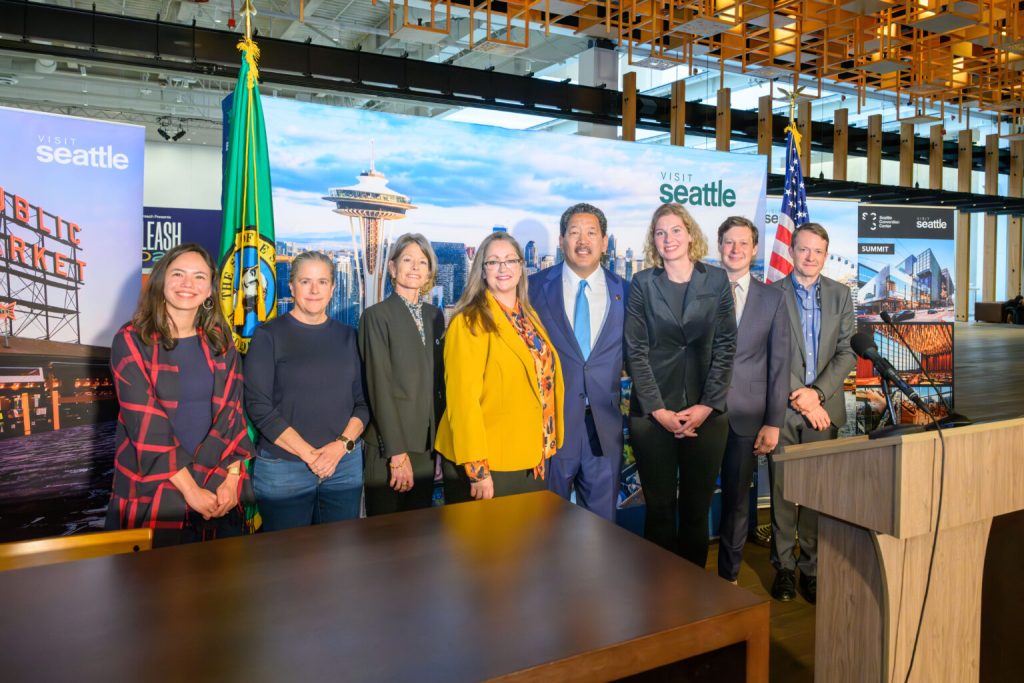
Big Decision Points Ahead for Seattle Center
In addition to the redevelopment of Memorial Stadium, the City will face some significant decision points in the coming years including how to accommodate Uptown’s planned Sound Transit light rail station, the future of the office building on the northeast corner of campus being vacated by KCTS, and the future of the City-owned parking garage on the other side of Mercer Street. Undergirding all of these decisions will be the fact that Seattle Center ultimately operates very differently than a city park or a street.
The fact that Seattle Center is largely dependent on the revenue generated by its long-term tenants, the arts organizations and tourist attractions that dot the campus, means that it has been hard for the City to stick to its own long-term plans for improving the campus as downtown’s largest parcel of public space. In 2008, the City completed its last major update to Seattle Center’s master plan, the Century 21 Master Plan.
Almost immediately upon adopting the plan, the City strayed from it, approving a plan to replace the aging Fun Forest amusement park with the Chihuly Garden and Glass attraction, which broke ground in 2011. The master plan had instead called for park space to stitch the Mural Amphitheater with the space needle instead.
Climate Pledge Arena, which infused new life into the west side of the campus with a full rebuild of Key Arena, required the relocation of several other amenities including the Seattle Center skate park, also deviating from the master plan. Through all these changes, the plan wasn’t updated.
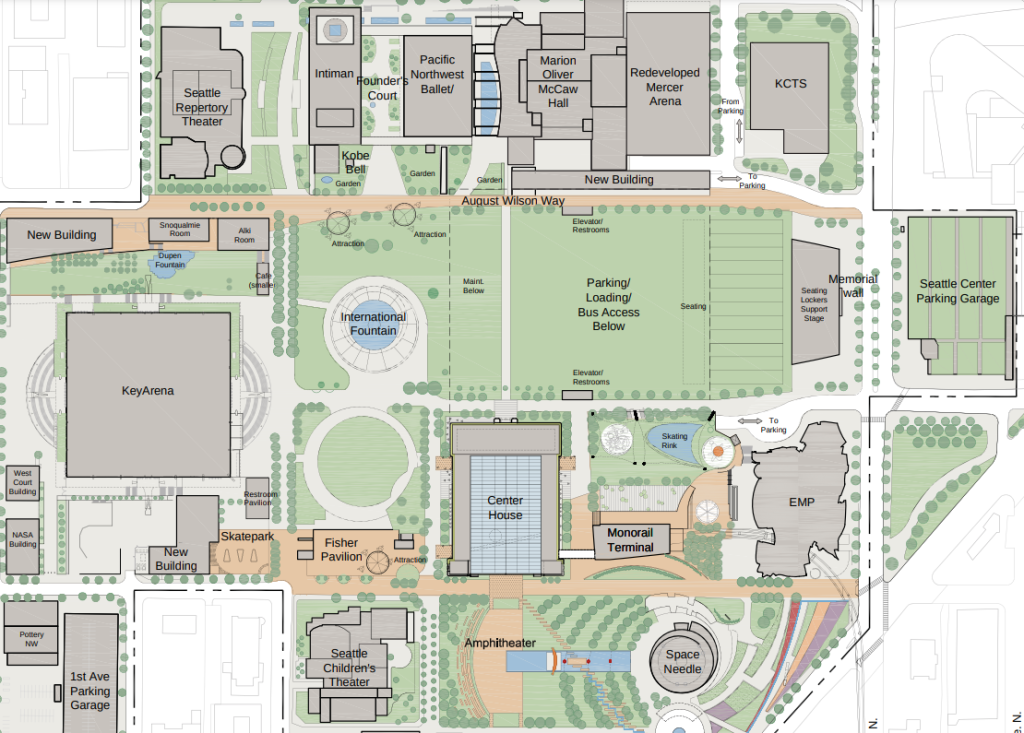
Redeveloping Memorial Stadium will be a more significant departure from the 2008 plan than any of these changes. The Century 21 plan envisions Memorial Stadium being replaced with a flexible public lawn space, managed by the City of Seattle with rent paid to Seattle Public Schools. A new parking garage under the lawn would allow the City to redevelop the Mercer Garage, stitching a desolate part of Uptown back together. The new Memorial Stadium would have opened up the entire campus, but a move toward more ticketed events could end up doing the exact opposite.
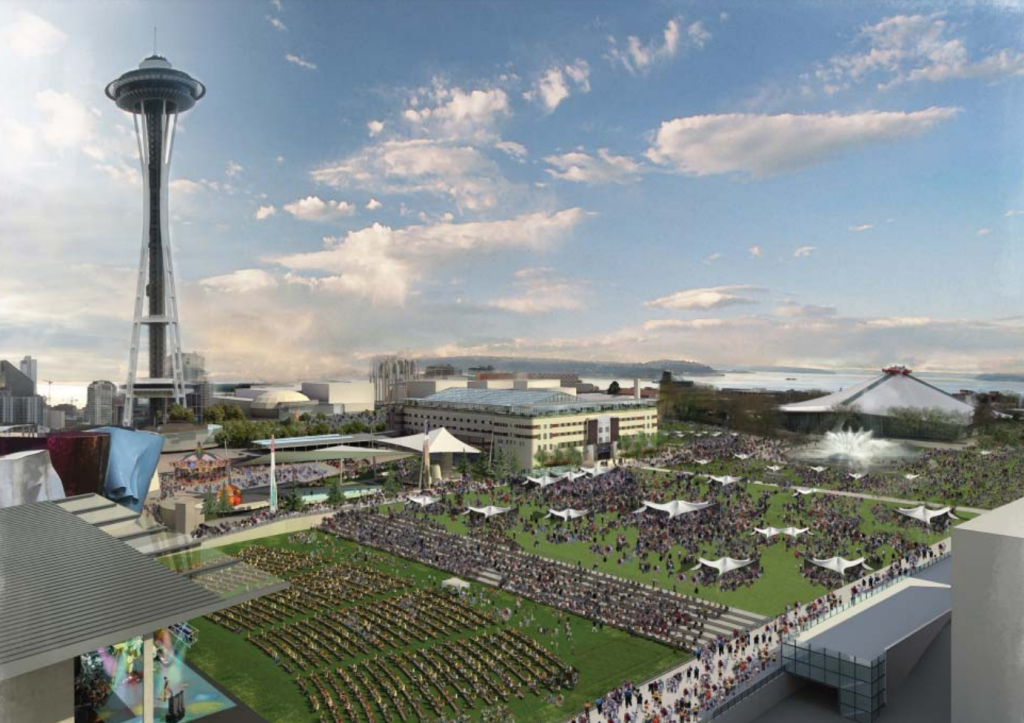
The Century 21 Master Plan is clearly badly in need of updating, but if past precedent is any indication the future of these significant public spaces will be guided more by a Request for Proposals (RFP) than a master plan that includes community input.
“I believe Seattle Center is at an inflection point,” Foster wrote to the Seattle City Council in response to a question about what he will want his legacy to be at the department. “On the one hand it is a much-loved, almost sacred space in the city. Nearly every Seattleite has a heart-warming, personal story to share about the Seattle Center – a summer afternoon at the fountain, an iconic Bumbershoot show, a day immersed in culture at a Festál event, or an evening cheering on one of our local sports teams. At the same time the campus and the community are running largely on this history, ready for a clear picture of what’s next, and how we can build a bridge between that legacy and what the city around us needs Seattle Center to be today and tomorrow.”
Foster has clearly shown an ability to deliver on what Seattle’s leaders want to accomplish — the challenging part will be ensuring that the work is aligned with the vision that Seattle residents have for one of its most iconic and well-used public spaces.
Ryan Packer has been writing for The Urbanist since 2015, and currently reports full-time as Contributing Editor. Their beats are transportation, land use, public space, traffic safety, and obscure community meetings. Packer has also reported for other regional outlets including BikePortland, Seattle Met, and PubliCola. They live in the Capitol Hill neighborhood of Seattle.

